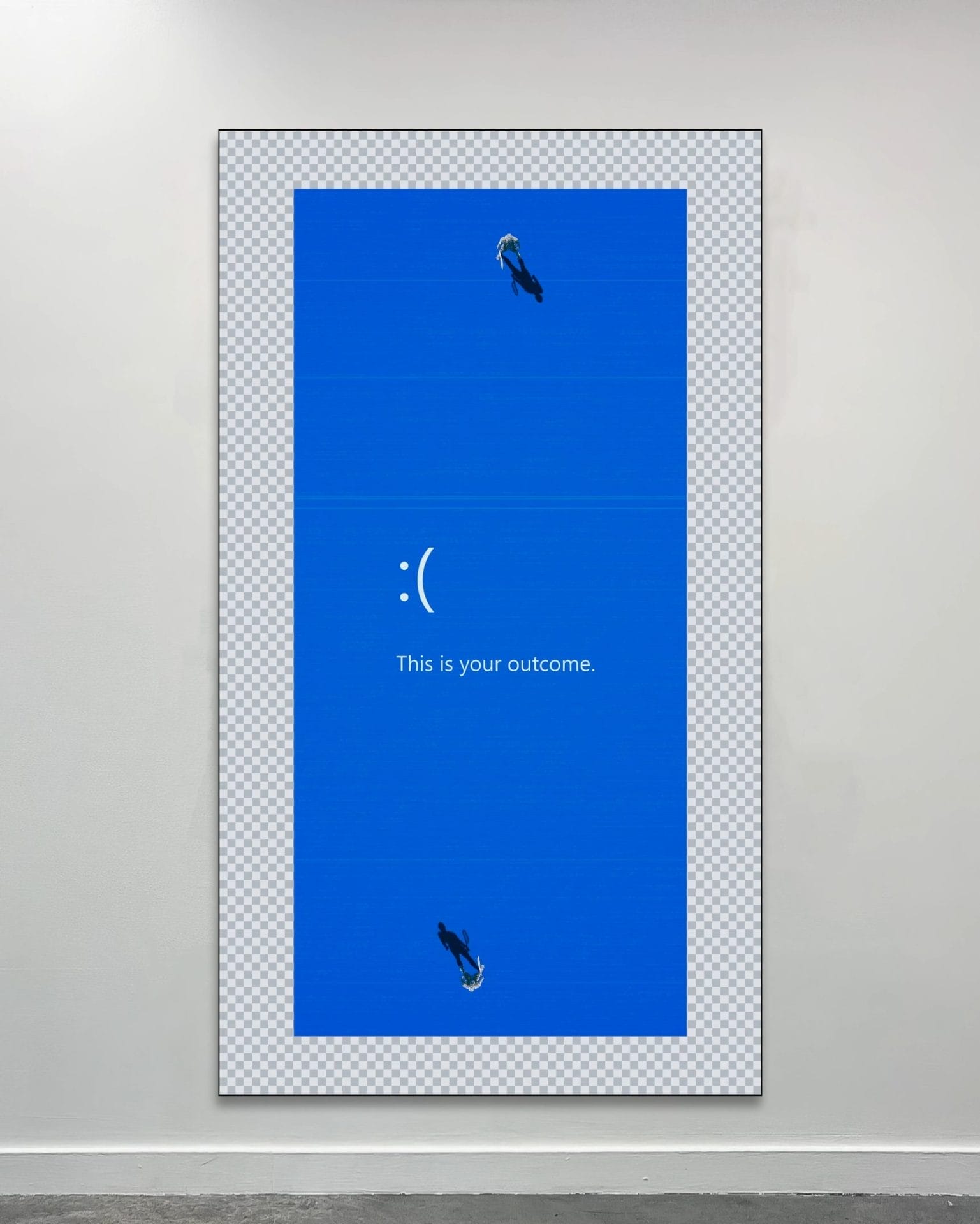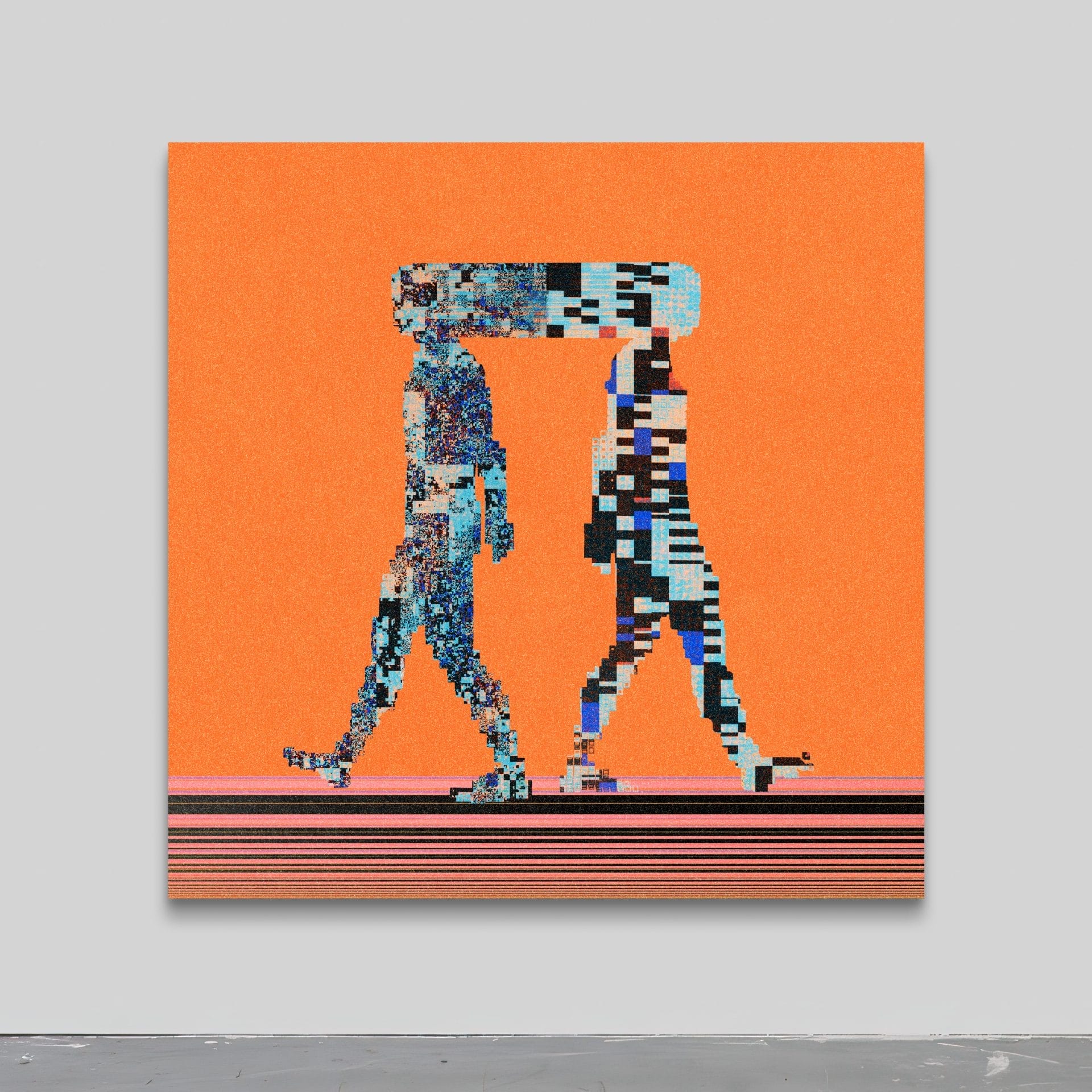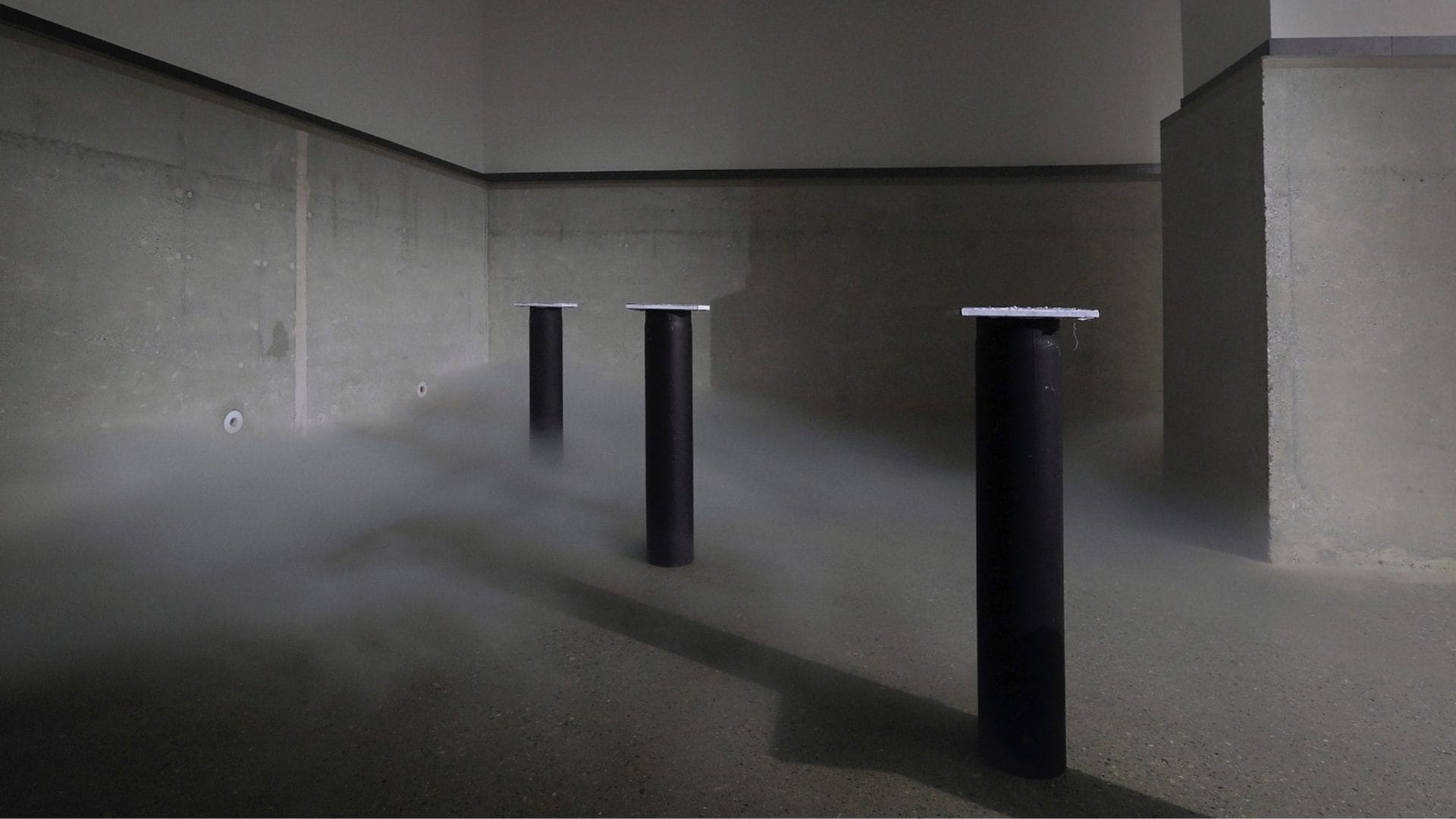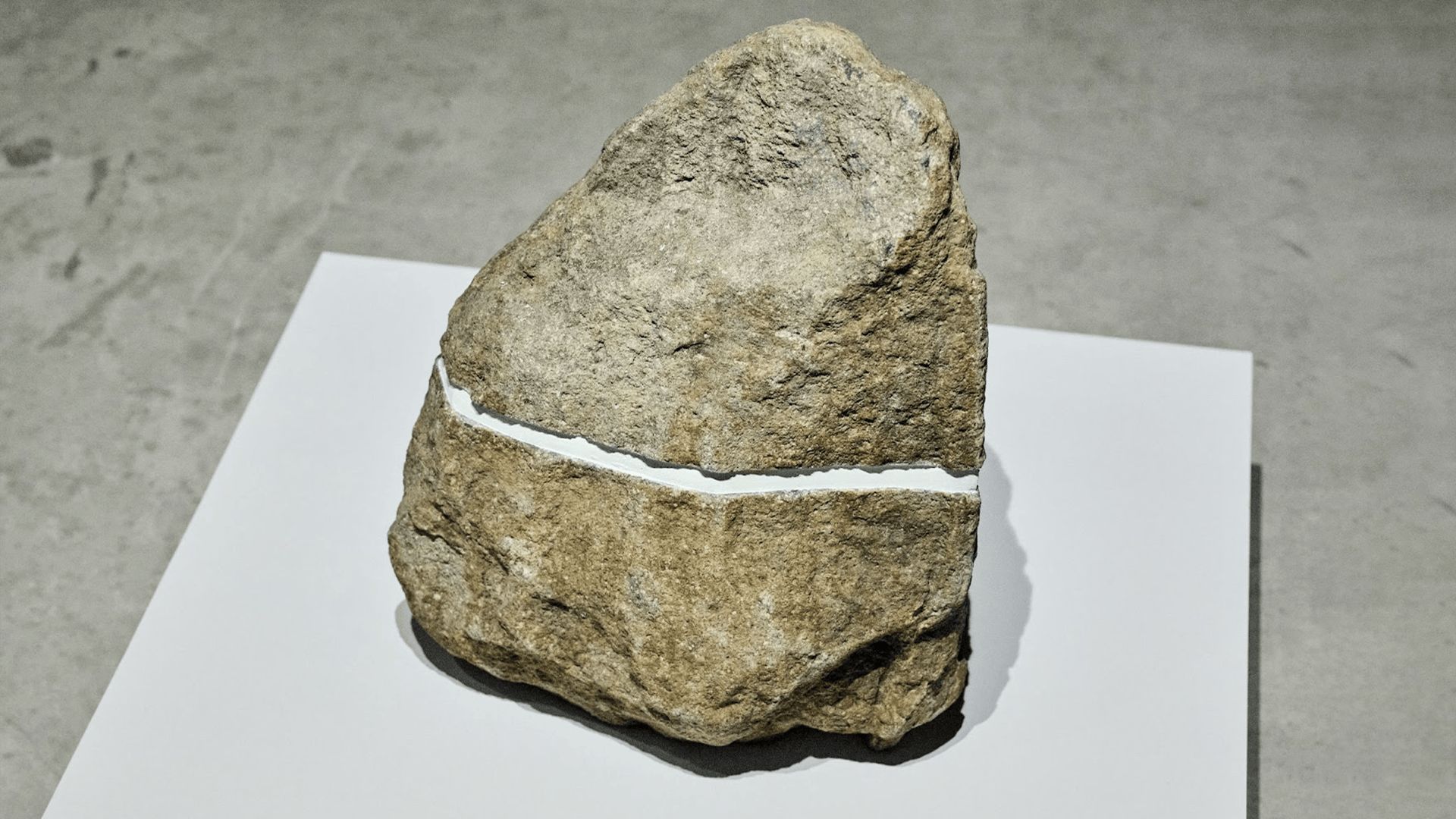
Cibarius and SodlabStudio In Conversation with Fakewhale
In today’s interview, we will delve into the world of “SodlabStudio” and “cibarius”, two artists who through their work merge disciplines such as psychology, sociology, and technology, highlighting the connection between the rational and irrational zones of our brain.
With backgrounds ranging from humanities studies and a twenty-year career in music production, to an education in design at the European Institute of Design in Milan, their multidisciplinary approach offers a unique perspective on the interaction between humans, technology, and history.
Through their artistic journey, cibarius and SodlabStudio illuminate significant moments that have steered their work towards a conceptual approach, where thought takes precedence over aesthetics, exploring themes such as the fragility of modern man, the importance of collaboration, and the role of digitalization in human relationships.
Fakewhale: We have noticed that your work integrates concepts spanning various disciplines, from psychology to sociology, to technology. Could you share something about your academic or self-taught background and how it has influenced your multidisciplinary approach?
Our work is mainly based on a metaphor that has as the central node about the very close relationship between the rational and the irrational zones of our brain, that is the cultural and the primitive. Specifically, “cibarius” has a background that includes humanistic studies and a 20-year career in the world of music production that have slowly condensed into a visual analysis of the relationship between man, technology and history. As for “Sodlab”, his resume is made up of notable collaborations in the world of design, a career that began after his studies at the “European Institute of Design” in Milan, which allowed him to be rooted in a path between art and freelancing. This is to say that our two backgrounds have turned out to be complementary, both on the conceptual side and on the purely technical side. It is precisely the dissimilar nature of our paths that has allowed us to develop in a more critical sense an analysis that we believe is of the utmost importance.

Fakewhale: Every artist follows a unique path that leads them to develop their own style and themes. What was the most significant moment or event that steered you towards the type of work you do today?
We firmly believe that every artist has a guideline that accompanies him or her on their journey and determines their choices even in a stylistic sense, and we lean toward a more conceptual approach, where thought takes over from aesthetics.
Consequently, the starting point is to have believed from the very beginning that an artist’s need is to be the chronicler of his or her own era for a journal called “Art.”
Basically, each of us has matured this feeling through our artistic journey and perhaps it has become more directly and tangibly manifested with our entry into the Italian art scene.

Fakewhale: Regarding ‘JEU A DEUX’, we are struck by the use of tennis as a metaphor to describe the dualism between rationality and irrationality. Could you explain how this image came about and why you believe sports can be an effective parallel to explore such human dynamics?
In “Jeu a Deux” what we did was to create various conceptual levels that could intertwine with each other and that could, one explain the other.So the central idea was to find a metaphor that would visually explain the interplay between an area afferent to the most primitive emotions such as fear, pain, pleasure and anger and the cultural area that has a constant cultural and intellectual adaptation. Their very close relationship led us to stage a tennis match in which the two entities have continuous exchanges that we intentionally described in a desire-fear dualism with the intent to make a social criticism but at the same time to describe that fascinating game of stimulus-reaction that daily takes place in each of us.

Fakewhale: The fragility of modern man, torn between the desire to conform and the wish to express his complexity, is a powerful theme. How do you believe art can help people recognize and address this fragility, especially in relation to JEU A DEUX?
Enacting these kinds of exchanges we believe is central to becoming aware of the workings of our “ego” and in psychotherapy carefully and rationally reliving that which has an irrational nature can become cultural baggage in the service of understanding. Our desire, as we have already repeated, is precisely to want to become the chroniclers of something that we feel has not been thoroughly analyzed and we believe that our act is recognized as “communicative,” able to change the emotional state of the interlocutor.

Fakewhale:On your work “Rencontre”: The description talks about two human beings sharing a common thought. In your experience, how do these moments of meeting and sharing between individuals influence creativity and innovation?
In “Rencontre” the idea of the relationship is outside artistic collaboration, though inspired by the need of two artists to find common ground.It is undoubtedly an analysis of the most primitive entity that constitutes a group, which then becomes a community and consequently creates society as a whole. After this premise we are better able to explain that the energy surrounding a collaboration of any kind, calls into play a spiral of unconscious processes, which are guided by an end, the result of our consciousness, and thus as in a great discovery, for example scientific, there are elements proper to the cultural background of the collaborators and those intangible to the scope of the discovery itself, which move a series of unconditional mechanisms such as fear, pleasure, anger or euphoria. This is to emphasize the centrality of rational-irrational dualism.
Fakewhale: On the concept of “Rencontre”: The digital component mentioned in your text seems to play a key role in depicting human interactions. How do you think digitalization has changed the way we perceive relationships and cooperation?
In our society there is a dualism of views in which the outcome of technology results, on one hand as an obstacle between human beings and on the other hand as an amplifier.In our view of today’s society we have a more progressive line, we believe in technology as a flywheel for a more complex and comprehensive way of interconnecting people.In fact, technology has managed to cancel distances and connect very closely compartments that are in themselves very different. Just take, for example, the close connection between blockchain and art, which have been able to revolutionize the world of personal expression in a hypertextual way, from the conceptual side to the realization side, from the economic side to the exhibition side.So, ultimately, our work does not point the finger at the technological world but tries to describe it in its negative and positive meanings.


Fakewhale: Analyzing “ATM”: The idea of rebellion and reinvention through unconventional use of objects is fascinating. Could you give us a concrete example of how you’ve applied this concept in this work?
Basically what we did was to “replay” some of the themes in our favor.We use the term “replay” because it comes from the field of cognitivism, in which it takes on a meaning different from the common playful sense usually attributed to it. In this regard, it was very interesting to have a generative video projected inside an object that has a material purpose, so the non-materiality of the code from which the random visual arises serves a dual function, as a defacement of what we familiarly know and as a description of the rigid mental patterns we inflict on ourselves. A less obvious feature is that of the shadows that occasionally obscure the scene, which come from silhouettes who pass in front of the central theme of the piece, but never stop almost intimidated or uncaring of a disruptive reality.
Fakewhale: Returning to “ATM”: The philosophy behind repurposing objects to challenge social conventions is intriguing. What has been the public’s reaction to these provocations?
Banally we could talk about the results that we have obtained within the social networks, so the likes and shares.However, the substantial side of the feedback we got from all those personalities who pointed out that these works are intended for a more immersive fruition so not only framed within a screen.Hence the idea of an exhibition in which we can enjoy the aesthetic and conceptual result that will be put in place by an Italian gallery.This is where the idea of an exhibition was born.
Fakewhale:Generally, your writings reflect deep contemplation on the human condition. What message or awareness do you hope to evoke in your audience through these observations?
As we have already said, we firmly believe that the artist is a chronicler and therefore has the need and the urgency to tell the story of his/her time or a topic that is relevant to him/her.Consequently, we trust in the effectiveness of the concept that gave birth to this series of works so that it can play the dual function of an amplifier for the digital environment and a social criticism for the digital environment itself. Hence the admonition to have a more critical and conscious attitude to art and the context around us and consequently use the words “interesting” and “fascinating” with more freedom.
fakewhale
Founded in 2021, Fakewhale advocates the digital art market's evolution. Viewing NFT technology as a container for art, and leveraging the expansive scope of digital culture, Fakewhale strives to shape a new ecosystem in which art and technology become the starting point, rather than the final destination.
You may also like
Kanrec Sakul, Sukera Fumo at VUNU, Košice
Sukera Fumo by Kanrec Sakul, exhibition design by Niki Bernath, at VUNU, Košice, 19/02/2025. Exhibi
Blockchain As A New Medium For Art
The symbiotic relationship between artistic ingenuity and technological advancements is continually
Paula Gogola & Natália Sýkorová at Medium Gallery, Bratislava
Paula Gogola & Natália Sýkorová, Begone Estrone, Medium Gallery, Bratislava, July 23 – Augu




